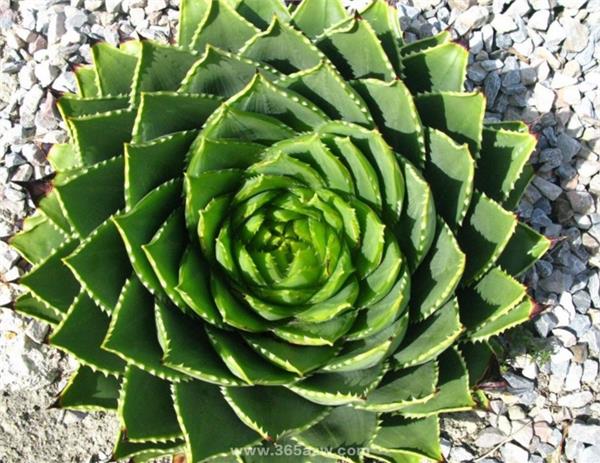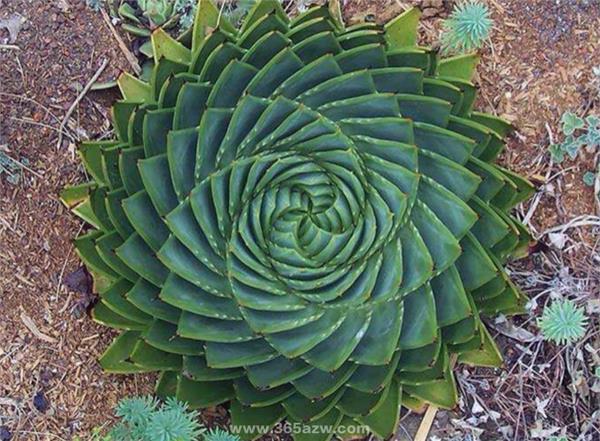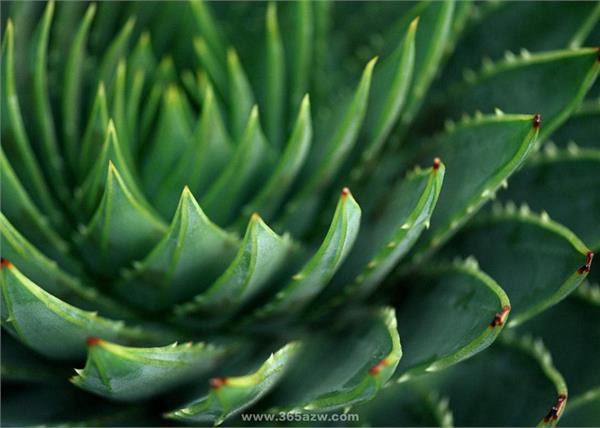What is multi-leaf aloe and how to cultivate it?
Many people know that aloe vera is ornamental and can be beautified, but does anyone know that leafy aloe vera? Today, we will tell you what is leafy aloe and how to cultivate it.

What is a leafy aloe?
Leafy aloe (scientific name: Aloepolyphylla), also known as spiral aloe, commonly known as King Solomon Jasper Crown, is a unique aloe in the Drakensburg Mountains of Lesotho.
Most of the leafy aloe vera is solitary, and many leaves are closely spiraled clockwise or counterclockwise, arranged into a uniform circle, the leaves are short and broad, grayish green, and the bracts remain on the inflorescence cypress. Leafy aloe vera usually has five layers of helix, each of which is made up of 15 Mel 30 leaves.
Leafy aloe vera usually blossoms in spring and early summer, and there are darker red and lighter red or even orange flowers, but those are individual differences and do not belong to subspecies or varieties.
Leafy aloe vera is found on high-altitude slopes, in loose rocks in the cracks of basalt on steep slopes, and often in the cloud belt of Lesotho. The soil of the growing area is well drained, and Rain Water is sufficient in summer.

Leafy aloe likes the environment with great temperature difference between day and night. The plant can withstand freezing without damage in winter dormancy, and can withstand high temperature of more than 40 ℃ in summer daytime.
The growth of leafy aloe is not slow when it grows up, but because of its strong terminal bud advantage, it almost does not produce ramets under natural conditions, and its flowers are very spectacular and beautiful. however, leafy aloe blossoms only in a special climate in its native place, and sometimes it does not bloom for many years when the climate is not suitable.
Adult plants are between 15 and 40 centimeters in diameter due to different environment and soil fertility, and the difference is huge. Aloe queen grows slowly when she is young, enters adulthood, and its life span is very long. It is said that the plant can survive for more than 50 years.
The ornamental value of leafy aloe is very high, and seedlings can only be obtained by sowing and artificial intervention to destroy the growing point. Therefore, the price of leafy aloe seeds is also one of the most expensive of almost all plants, because it does not blossom very often and is difficult to bear seeds without proper opportunities for flowering and pollination, so the price of a single seed is even more than 10 euros.

How to cultivate Aloe vera
1. Soil:
Leafy aloe likes to grow in loose soil with good drainage and not easy to consolidate, and the general soil can be mixed with some gravel ash. Poor drainage and ventilation of the soil is easy to cause root respiration obstruction, so that the growth of multi-leaf aloe is poor.
2. Lighting:
Leafy aloe vera needs plenty of sunlight to grow. it should be noted that newly planted leafy aloe vera is not suitable to bask in the sun. It is best to see the sun only in the morning. It will slowly adapt to the sun and thrive after ten and a half days.
3. Watering:
Like all plants, leafy aloe also needs water, but it is most afraid of stagnant water. It is easy to shrink leaves, rot branches and roots and even wither in wet seasons or poor drainage.

4. Fertilization:
Fertilizer is indispensable to any plant. Leafy aloe needs not only nitrogen, phosphorus and potassium, but also some trace elements, so try to use fermented organic fertilizer.
5. Pest control:
The common diseases of Aloe vera are anthracnose, brown spot, leaf blight, white silk disease and Fusarium crown rot. Before the occurrence of the disease, or after the diseased parts of the diseased plants were removed, 0.5 ml 0.8 Bordeaux solution of lime (that is, 0.5 kg of copper sulfate and 0.8 kg of lime per 100 kg of water) was applied to the leaves of aloe vera. It can effectively prevent and inhibit the invasion and spread of bacteria. Disease treatment. After the occurrence of the disease, it can kill the pathogen in aloe and control the spread of the disease by direct application of internal absorption and conduction therapeutic agents such as topirazine, pyrethromycin, and antibiotics such as streptomycin sulfate, agricultural streptomycin, chunramycin, Jinggangmycin and so on.
Leafy aloe is most vulnerable to the crown rot of Fusarium oxysporum, which is mainly caused by the lack of sufficient oxygen in the root during planting, so this species is suitable for large grained coarse stone as upper layer plant material in culture. and cooperate with carbendazim to control the disease.
Related
- Wuhan Hospital Iron Tree Blooming Result Was Instantly Frightened by the Gardener Master
- Which variety of camellia is the most fragrant and best? Which one do you like best?
- What is the small blue coat, the breeding methods and matters needing attention of the succulent plant
- Dormancy time and maintenance management of succulent plants during dormancy
- Minas succulent how to raise, Minas succulent plant pictures
- What are the varieties of winter succulent plants
- How to raise succulent plants in twelve rolls? let's take a look at some experience of breeding twelve rolls.
- Attention should be paid to water control for succulent plants during dormant period (winter and summer)
- Watering experience of twelve rolls of succulent plants
- Techniques for fertilizing succulent plants. An article will let you know how to fertilize succulent plants.



